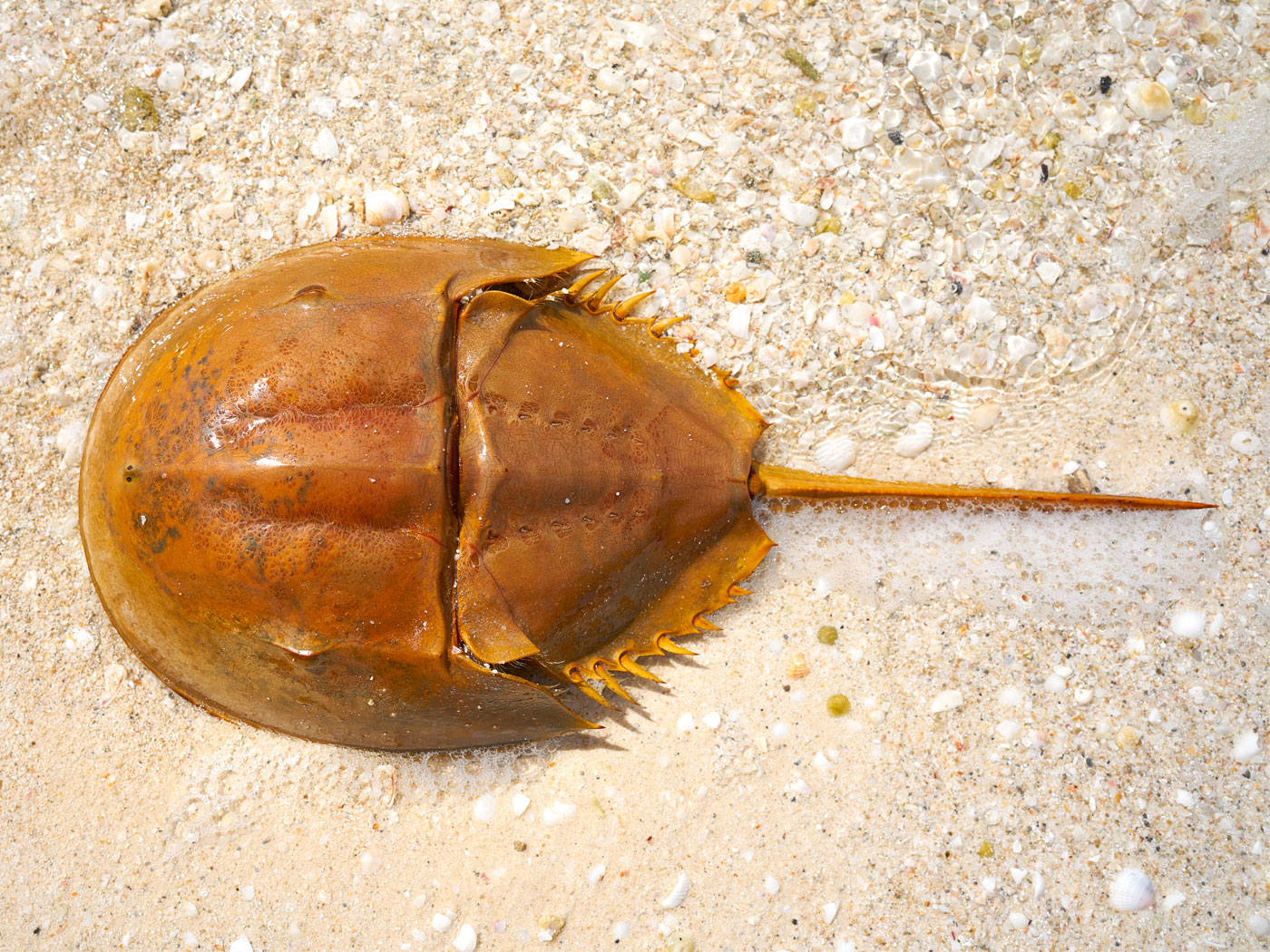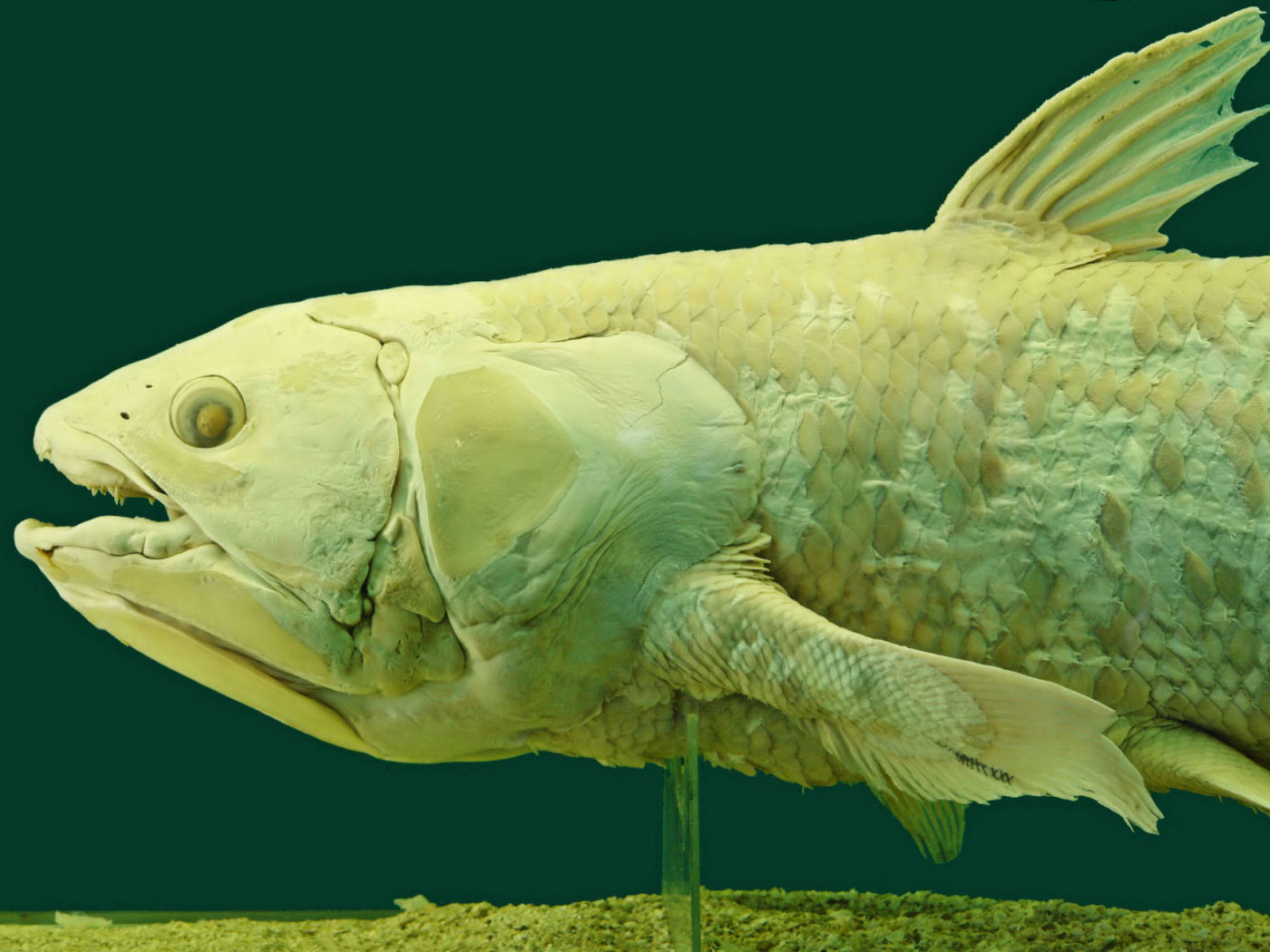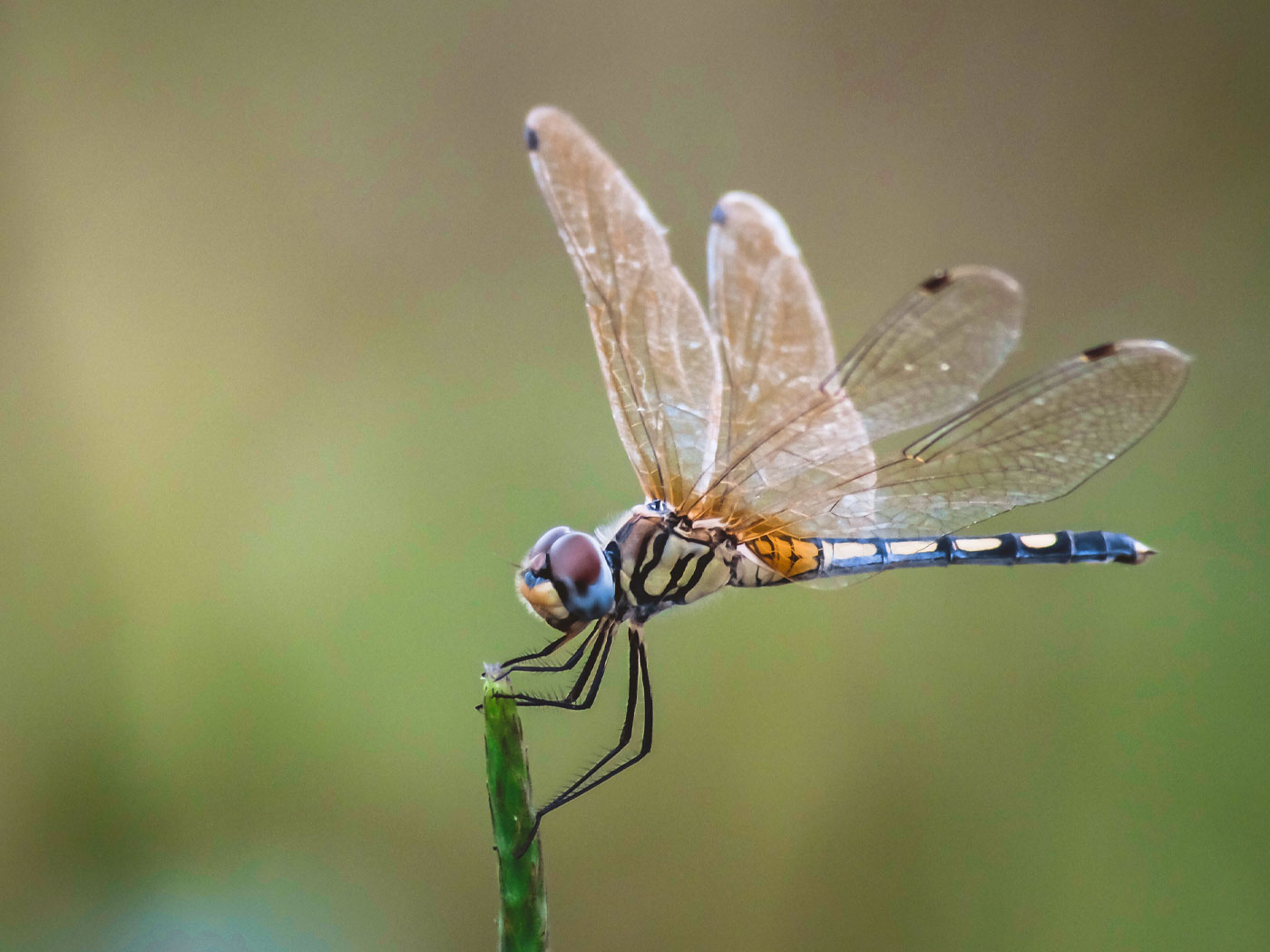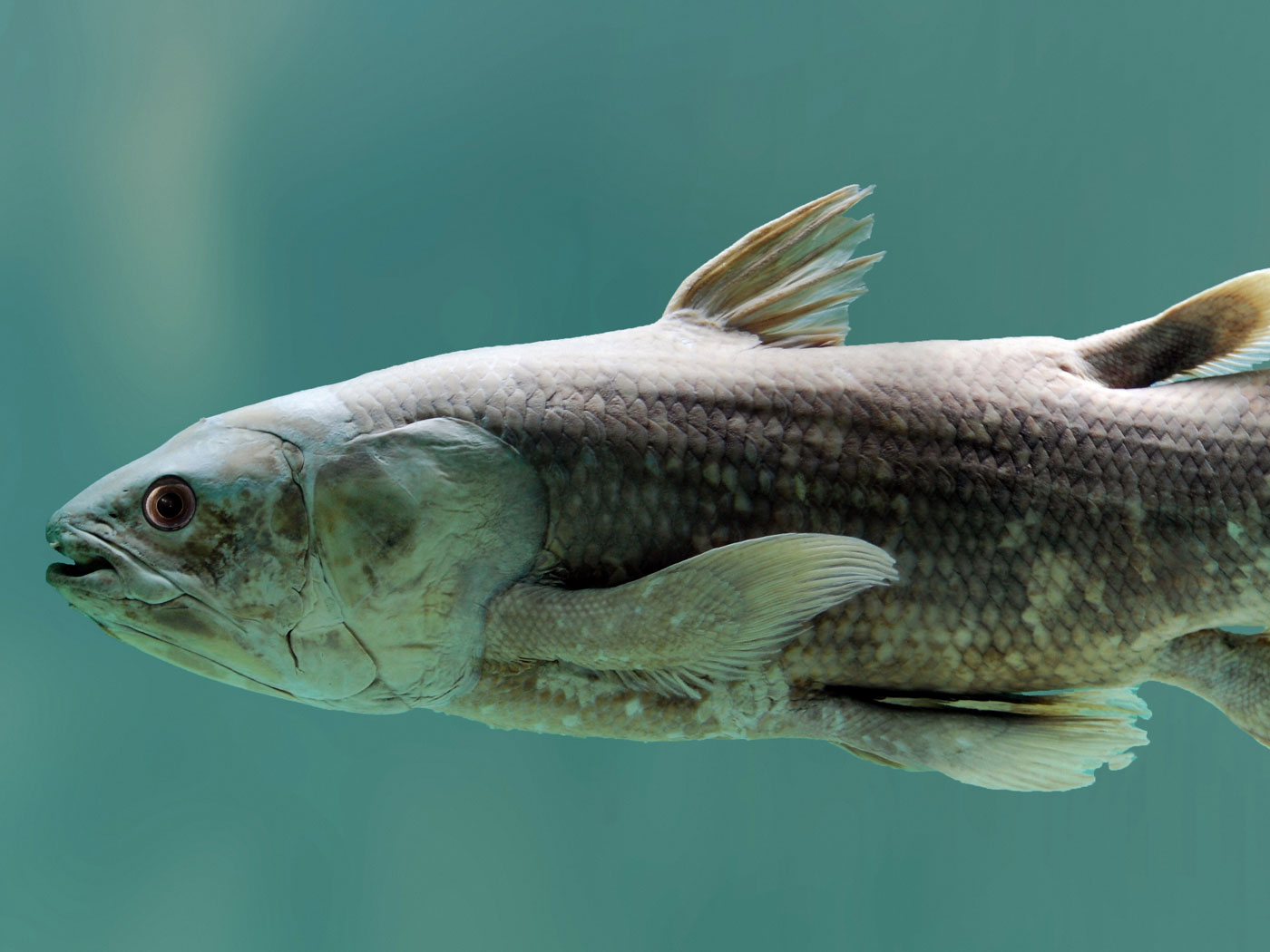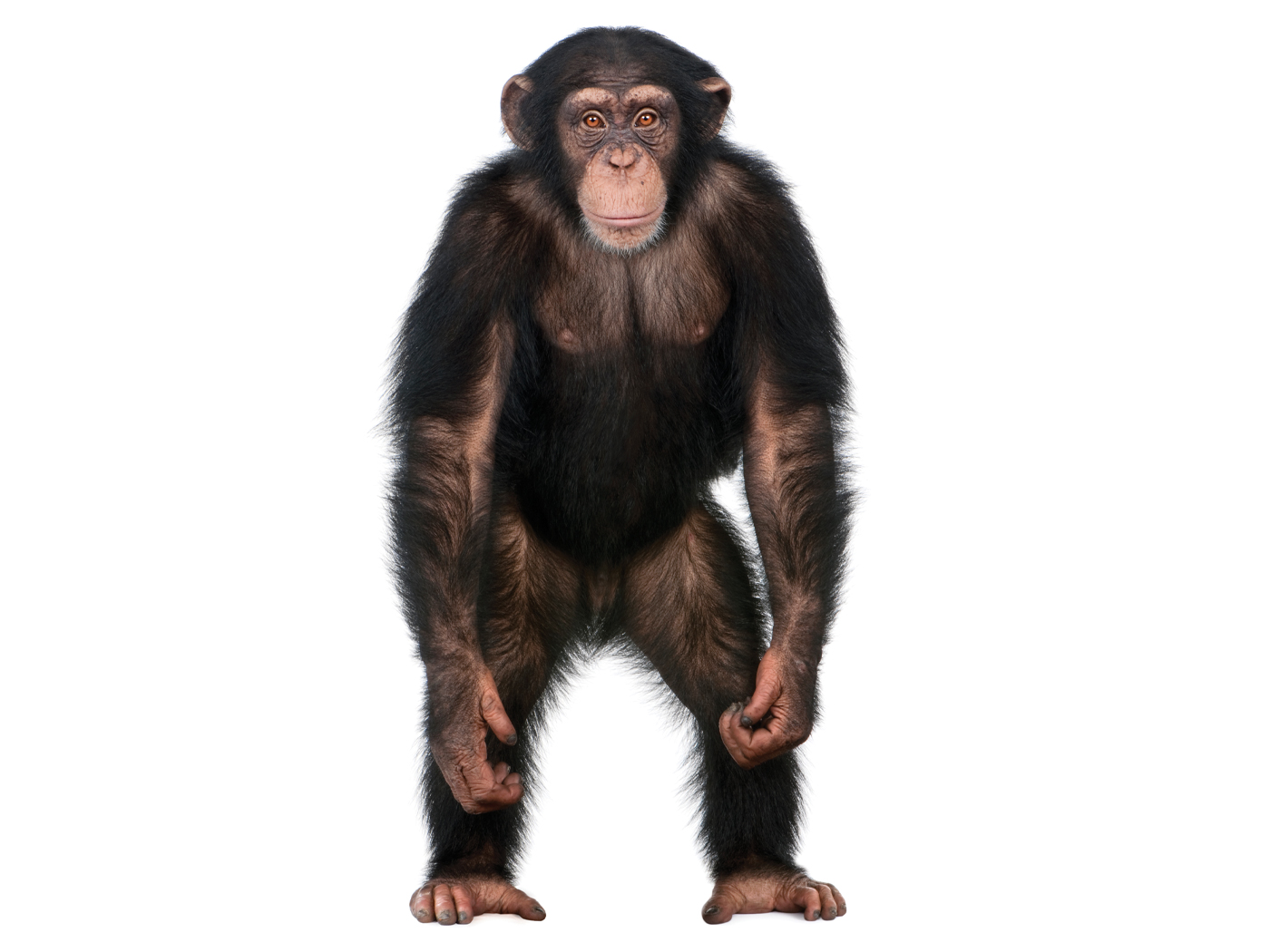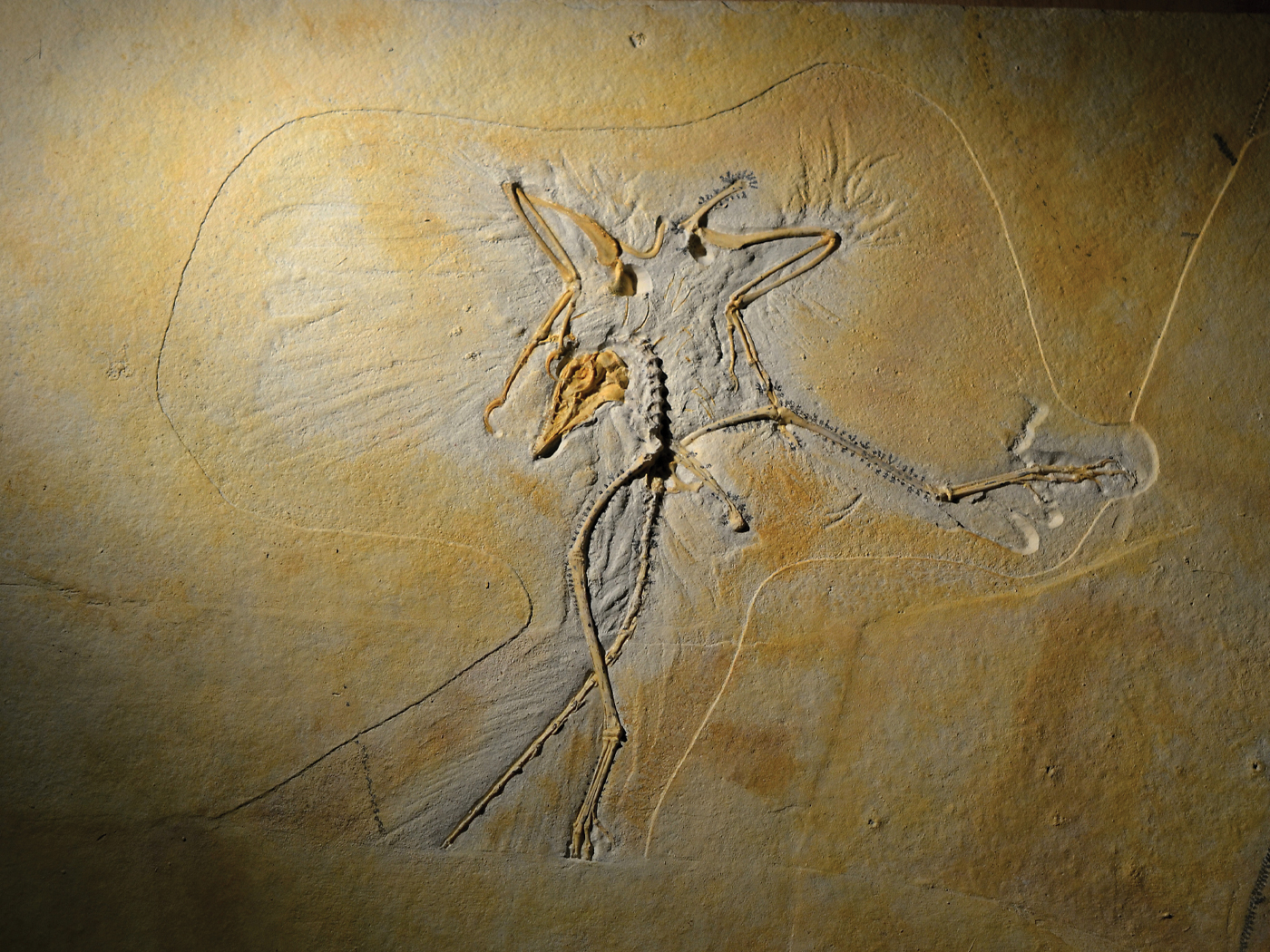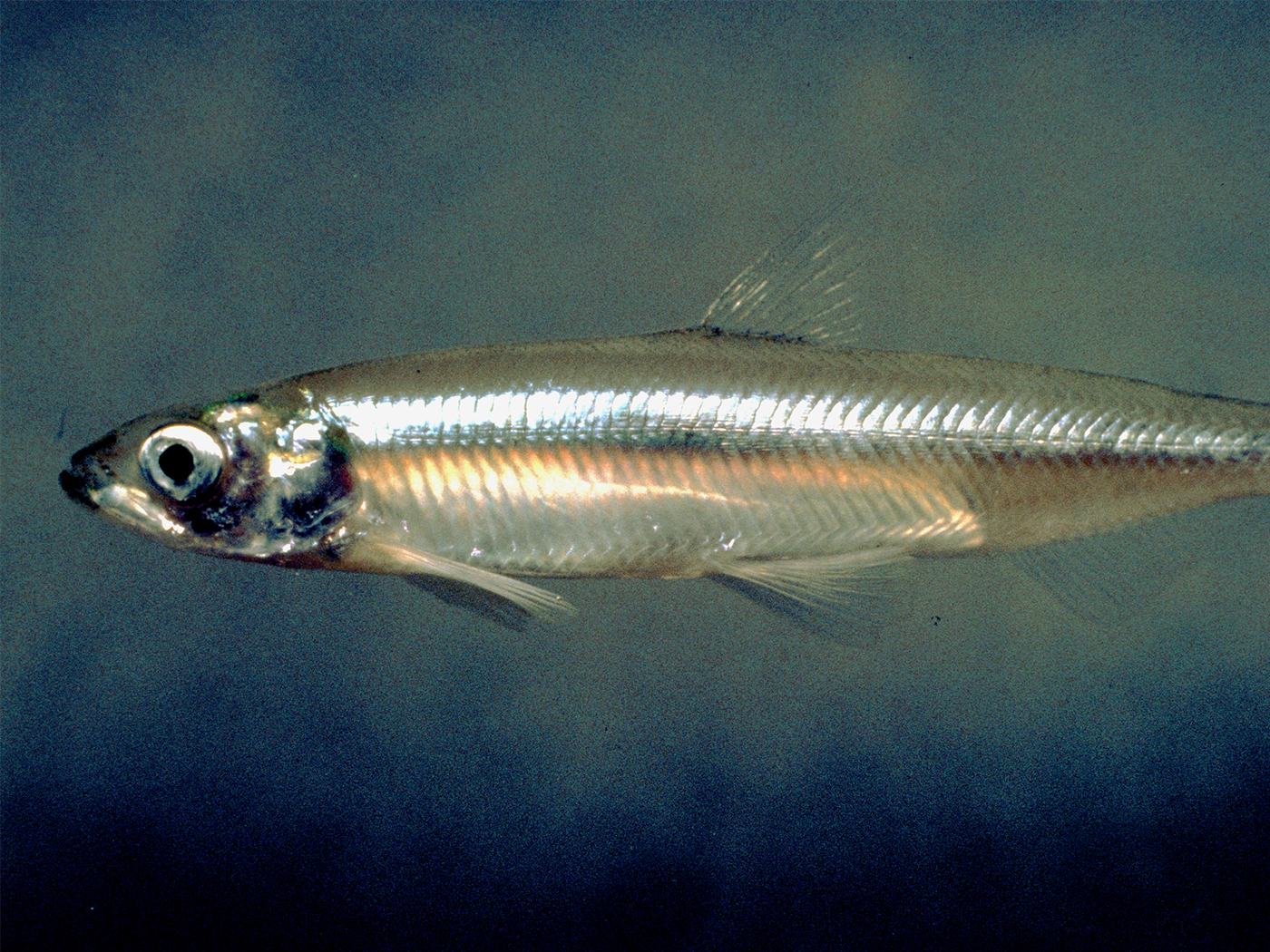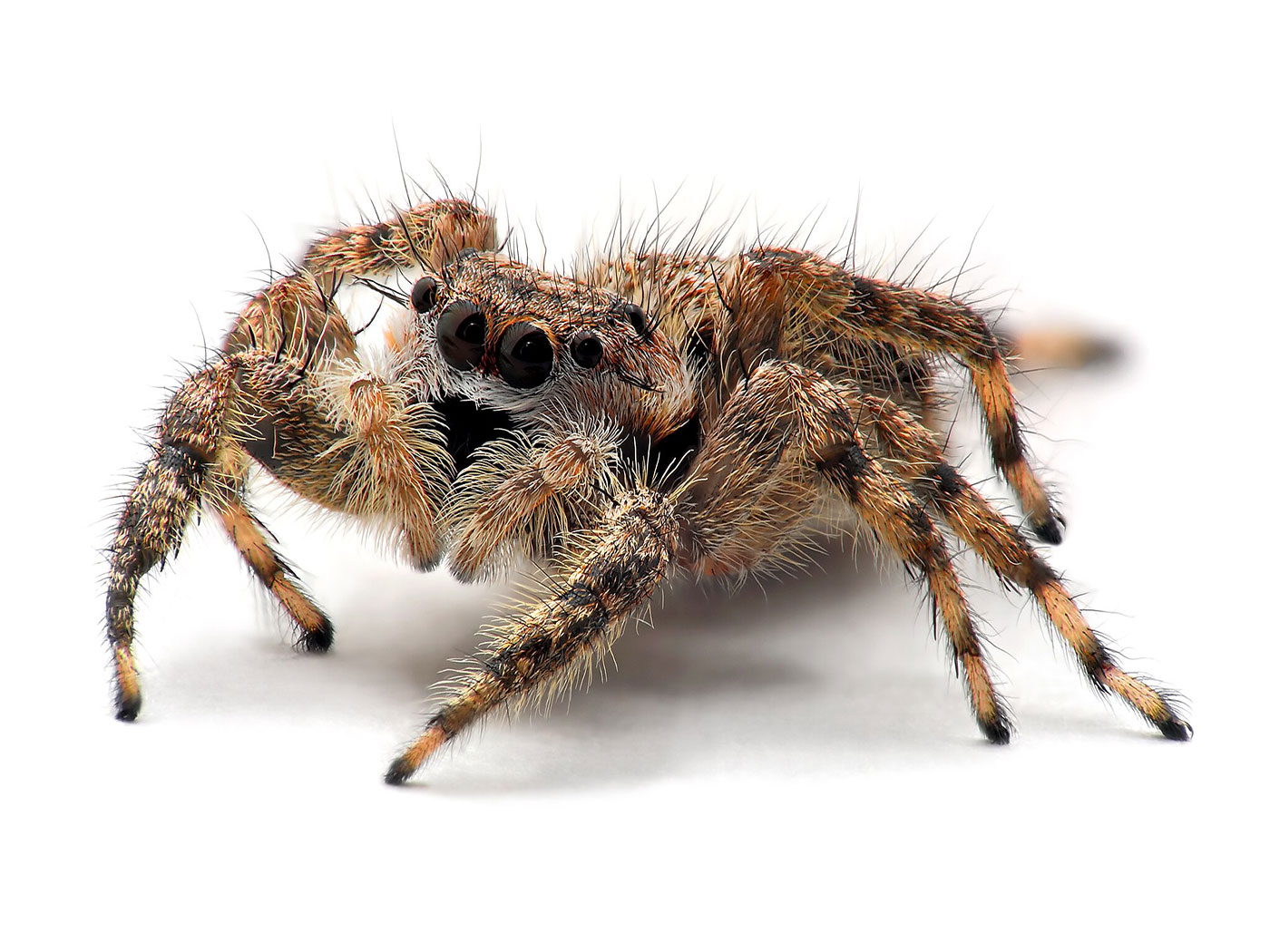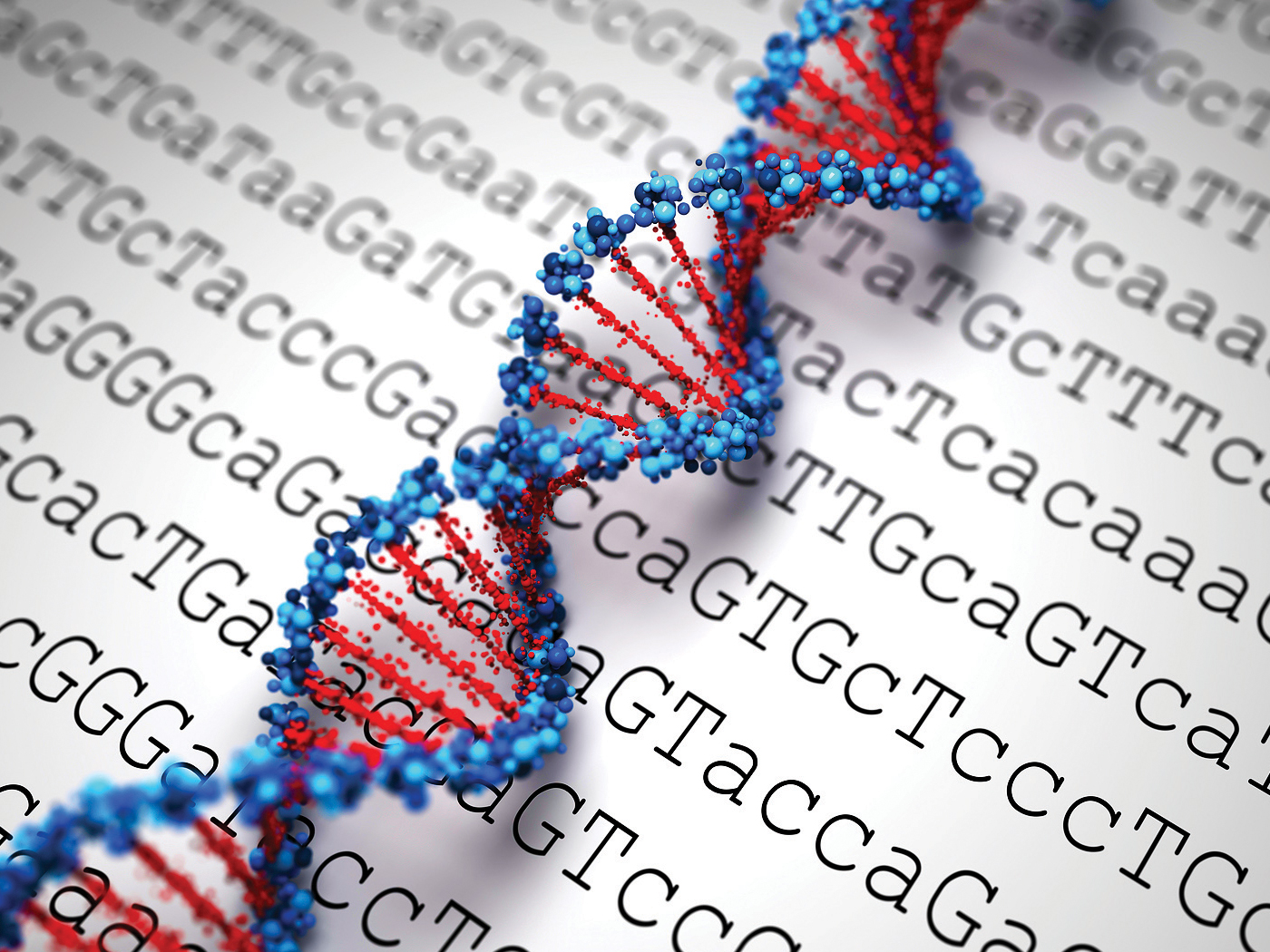Variation Is Limited within Kinds
Plants and animals were originally created with large gene pools within distinct created kinds. A large gene pool gives a created kind the genetic potential to produce a variety of types within the kind, allowing the offspring to adapt to varying ecosystems and ensure the survival of that kind of organism.
Genetic potential can best be understood by observing the large number of dog breeds. There are many shapes, sizes, and colors of dogs, illustrating the tremendous genetic potential in this kind of animal—but they all remain distinctly recognizable as dogs. Other kinds of plants and animals have similar potential to produce variety within their own created kinds.
Evidence for Creation › Evidence from Science › Evidence from the Life Sciences › Life Was Created Fully Functional» Next
Related Articles
Silurian Horseshoe Crab
Supposedly, throughout the past hypothetical millions of years, sub-human primates became man, dinosaurs evolved into birds, and a group of mammals even returned to the oceans to become whales. But...
The Coelacanth: A Living Window into God's Design
Imagine a fish designed with such precision that it has thrived in deep, dark ocean waters for generations unchanged, resilient, and wonderfully suited to its world. That’s the coelacanth, a mysterious...
The Only Mesozoic Dragonfly in Canada—Is a Dragonfly
In 2023, an undergraduate student from McGill University discovered a new dragonfly species in Alberta, Canada. In fact, “This is the first ever dinosaur-aged dragonfly found in Canada,”...
Another Big Mistake in Evolution
The strange and wonderful coelacanth1 has long been a challenge to evolutionists.
The coelacanth has long been hailed as an ancestor to amphibians and other tetrapods as their lineage...
Darwin's Galápagos Finches: The Myth of Natural Selection
A group of birds known as Darwin’s finches (genus Geospiza) lives in the Galápagos Islands in the Pacific Ocean 600 miles west of Ecuador. These birds got their fame from Charles Darwin’s...
Blind Cavefish Unmask the Convergent Evolution Myth
Within the ever-expanding theory of evolution, there is a system of specialized language designed to identify each major interpretative concept. Some terminology is so versatile that it could be applied...
Evolutionary Vestigial Features: Worse Than Myth, a Scam
Due to teachers’ influence during the formative years of young people’s lives, they can be a powerful force in spreading evolution to new generations. Teachers carry real authority. They...
Archaeopteryx, Myth of a Transitional Fossil
In 1860, one year after the publication of Charles Darwin’s On the Origin of Species, a wonderfully preserved fossil feather was discovered in the Jurassic Solnhofen Limestone in Germany. A year...
The Tiktaalik Missing Link Myth
In 2004, the paleontological community—and the world—was presented with what many evolutionists considered to be a dyed-in-the-wool missing link between fish and land animals (tetrapods)....
Quietly ''Devolving'' Tomatoes?
Apparently, evolution (and natural selection) can do almost anything:
If new forms appear, the credit goes to creative natural selection; if old forms fail to change, the conservative force is called...
Did Earthworms Rewrite Their DNA to Survive on Land?
An earthworm news story was recently posted that openly questions Darwin’s gradual and slow evolutionary progress in the living world.1 The first paragraph of the EurekAlert! article...
Freshwater Fish Fossil in Australia
Yet another fish fossil has been discovered. This one was found in the Australian desert and was dated by evolutionists to be “15 million years old.”1 Like finding a 100% dinosaur...
Human Evolution and the Inner Ear
The vain attempt by evolutionists to make an evolutionary connection between people and ape-like ancestors continues. This time, it is in regard to the inner ear of a supposedly six-million-year-old...
Arachnid Origin—WGD (What God Did)
Where did spiders (arachnids) come from? What was their origin? Clearly, the fossil record shows spiders have always been spiders1,2 along with other chelicerates (a subphylum of the arthropods).
The...
Why Aren't There Any Flightless Bats?
Animals designed to fly are classified into four groups: the extinct flying reptiles (pterosaurs), insects, mammals (bats), and birds. According to the creation model, bats and birds were created on...
Octopus and Fish Plan a Complex Coordinated Hunt
The octopus—an invertebrate—never fails to surprise researchers with its incredible abilities.1,2
The octopus was designed by the Lord Jesus with amazing powers of perception,...
Evolutionary Dinosaur Analysis Leads to Bizarre Conclusion
A new dinosaur discovery in Rio Negro Province in central Argentina resulted in a very peculiar assertion.1 A bipedal dinosaur (walked on two legs) named Jakapil kaniukura was unearthed in upper...
Scientists Reach for Evolution's Replacement
Most people say that evolution is true, so why do a growing number of scientists doubt it? These skeptics don’t question evolution’s premise that nature alone is somehow responsible for crafting...
Mutation, Design & Randomness
Article highlights:
• A genetic mutation is a change—most are bad and some are good.
• Evolutionists claim that good mutations come from random processes.
• Genetic mutations...
Belugas Select Friends Who Aren’t Close Kin
Beluga whales don’t select their friends according to what Darwinists would expect, a new Florida Atlantic University study shows.1,2 The research findings are taken from ten Arctic beluga...
First Human Chromosome Fully Sequenced
Most people might be surprised to learn that the human genome has not been fully sequenced. Gaps still remain that have not yet been bridged because of the nature of the DNA sequence coupled with past...
Teenage T. rex Fossils
A new analysis of a small pair of T. rex-like fossils, called Nanotyrannus, shows they were actually teenage T. rexes.
Holly Woodward, from Oklahoma State University, and her colleagues reporting...
Indian Kangaroo Pictographs Challenge Evolution
by Brian Thomas, Ph.D., and Timothy Clarey, Ph.D.
Evolutionary narratives insist that kangaroos, and the marsupials they represent, evolved millions of years ago in Australia. Supposedly, that’s...
Are the Galápagos Islands a Laboratory of Evolution?
A recent Livescience article1 is entitled “The Galápagos Islands: Laboratory of Evolution.” It addresses, among other things, “unique examples of plant and animal...
Rapid Finch Speciation Counters Evolution
About a dozen species of Darwin’s famous finches inhabit the various Galapagos Islands. Textbooks have long used these animals as examples of evolution. Now, Peter and Rosemary Grant, career researchers...
Dinosaur Eggs Not Bird-Like After All
Prevailing secular theory considers birds to be living dinosaurs, but new science is hatching to support the stark differences between these creatures. The data demonstrate dinosaurs were more likely...
Monkey Business in the New Gorilla Genome
Old evolutionary assumptions seem hard to break. The recent assembling of ape DNA sequences based on the human genome provides a good example. This new gorilla genome study, despite capitalizing on...
Blue Tarantulas Supposedly Evolved Eight Times
Like all other animals, the origin of spiders poses an ongoing problem for evolutionists. According to the fossil record, "the first fossil spiders are known from the Devonian"1...
Can't See the Forest for the Trees
At the 75th annual meeting of the Society of Vertebrate Paleontology, held this year in downtown Dallas, the world's foremost fossil experts presented scores of research summaries. Researchers described...
Snakes Have Always Been Snakes
It's an old story. An animal or plant is discovered in sedimentary rocks by paleontologists and it pushes the organism's origin further back by many millions of years—but it's always...
The frilled shark . . . is still a shark
On January 21, 2015 the news broke—an Australian fisherman hooked a "living fossil." Called the frilled (or frill) shark (genus Chlamydoselachus, belonging to Order Hexanchiformes),...
Circular Arguments Punch Holes in Triceratops Study
Researchers continue to study one of the most well-known dinosaurs—the three-horned genus Triceratops—as they analyze data collected during the eleven-year Hell Creek Project. The effort...
Clever Clover: Evidence for Evolution?
Clovers come in a wide variety of sizes, and some of them hold interesting surprises. Plant biologists have been studying one trait in particular, and it keeps showing up—or disappearing—in...
Why God Created Large, Sharp Teeth
Nineteenth-century English poet Alfred Tennyson famously described nature as "red in tooth and claw."1 But were claws and teeth originally intended to draw blood, or were they used...
Rediscovered 'Extinct' Tortoise Frustrates Darwinism
Observing animals on the Galapagos Islands supposedly helped Charles Darwin come up with his theory of evolution by natural selection. But none of these animals have fulfilled the evolutionary interpretation...
Do Hairless Fruit Fly Larvae Spell "Evolution"?
Does it matter whether the larvae of one fruit fly species have hairy backs while those of another are smooth? Well, for scientists who believe both species descended from the same ancestor population,...
Evolution's 'Best' Examples
If Charles Darwin could see today's best examples of evolution, would he be elated or depressed?
The well-known British naturalist popularized the idea of "natural selection," speculating that...
Shark Study Hammers More Nails in Evolution's Coffin
In the late 1800s, a Darwinian concept called "transmutation of species" revolutionized historical biology. Instead of viewing animal species as the products of special creation, Darwinists believed...
Lizard Study Questions Natural Selection
Charles Darwin proposed "natural selection" as the means by which new creatures evolve. The question then became, what does nature select? The reigning consensus is that nature selects individuals...
Miniature Horse Poised to Break Record
The Guinness Book of World Records is renowned for its collection of odd feats and extraordinary measurements. One of its entries may someday be a young miniature stallion named Einstein, which promises...
Irreversible Complexity--Evolution Loses Another Round
Scientists discovered something remarkable in a recent study—evolution can’t be reversed. In tracing the supposed evolution of a common protein, they introduced mutations to move the protein...
New Pterosaur Fossil Forces Re-think of Standard Evolution
Charles Darwin admitted that the sudden appearance of fully formed creatures in fossil deposits was one of the biggest problems with his hypothesis that nature generated living creatures through natural...
'Totally Strange' Hurdia a Hurdle for Evolution
Cambrian rock layers contain fossils that represent almost every modern phylum of animal, plus many that are now extinct. One animal fossil in particular would win the weird prize, if there were one. Paleontologists...
Snail Changes Outpace Evolution's Slow Crawl
Scientists observe many changes to animal physiology that occur too quickly to fit the “slow and gradual” concepts favored by classical Darwinian evolution. An illustration of this type of...
Neo-Darwinian Theory Fails the Mutation Test
Darwin’s original conception of simple-to-complex evolution maintained that nature selected certain individuals with superior features, and in this way gradually, one tiny feature at a time, an entirely...
'Live Evolution' Not Witnessed After All
Some science media outlets are hailing a recent study as “live evolution witnessed,” but what researchers at the Centre National de la Recherche Scientifique actually saw isn’t evolution...
Parasitic Worms Evolved the Wrong Direction
Parasites are a topic that often makes people cringe. Some like to use parasites as an argument against creation, because after all, how could a good God create “bad” organisms like these?
According...
Evolution and Malaria
The parasitic disease known as malaria continues to devastate millions of people. It is acute in Africa, where over two million people die per year—most of them children. The protozoan (single-celled)...
Gene Mutation Makes Tot Stronger
Because mutations are random relative to need and because organisms generally fit well into their environments, mutations normally are either neutral or harmful; only very rarely are they helpful—just...
The "Just-So" Story of Enzyme Origin
The origins debate will always be regarding the origin of species — or macroevolution. Creationists look to the God of the Bible — the Creator — as explanation for the origin of everything....
Evolutionists and the Moth Myth
Most creationists and most evolutionists are well aware by now of the fall of the evolutionist's icon, the peppered moth, which for many years had adorned the pages of introductory biology textbooks as...
The Microwave of Evolution
Contrary to the statements of most evolutionary writers, few (if any) creationists have ever advocated the idea of absolute fixity of species. The Biblical unit of biological taxonomy, of course, is the...
What Is The Difference Between Macroevolution And Micro.,.
There is much misinformation about these two words, and yet, understanding them is perhaps the crucial prerequisite for understanding the creation/evolution issue.
Macroevolution refers to major...
Do Peppered Moths Prove Evolution?
Darwin's book Origin of Species, published in 1859, proposed the concept of evolution by purely naturalistic causes, especially natural selection. His idea was that the small variations observed within...
Mutation Fixation: A Dead End for Macro-evolution
Most arguments against the possibility of mutation as a mechanism for evolution revolve around two premises: that mutations are almost always harmful, and that the idea of their improving rather than harming...
Mimicry
As more and more scientists adopt the creation model, there ought to be an increasing emphasis on examining data from a creationist viewpoint and a decreasing emphasis on searching out failures of the...




